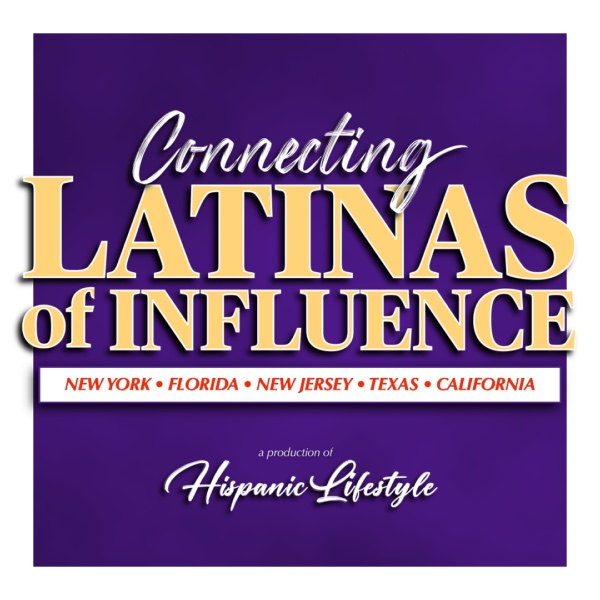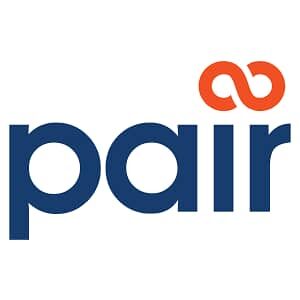
Business | How California goes Online
Most Californians Using
Cell Phones to Go Online
MOBILE DEVICES CHANGING WORK HABITS, SHOW
POTENTIAL FOR NARROWING DIGITAL DIVIDE
 Californians are twice as likely to use their cell phones to access the Internet than they were just three years ago, according to a statewide survey released today by the Public Policy Institute of California (PPIC). The PPIC survey—the third in a series focusing on information technology issues—was conducted with funding from the California Emerging Technology Fund and ZeroDivide.
Californians are twice as likely to use their cell phones to access the Internet than they were just three years ago, according to a statewide survey released today by the Public Policy Institute of California (PPIC). The PPIC survey—the third in a series focusing on information technology issues—was conducted with funding from the California Emerging Technology Fund and ZeroDivide.
While state residents are more likely to go online from their desktop (56%) or laptop computer (55%), 40 percent connect to the Internet from their cell phones—up from 19 percent in 2008 and 26 percent in 2009. Internet users who go online via cell phone are also doing so more often, with 59 percent saying they do several times a day (30% in 2009). Just 9 percent say they access the Internet by cell phone every few weeks, less often, or never; 35 percent gave this response in 2009.
The use of cell phones to go online has increased across racial and ethnic groups. Today, 57 percent of blacks (31% in 2008), 43 percent of whites (18% in 2008), 41 percent of Asians (24% in 2008), and 32 percent of Latinos (16% in 2008) say they have accessed the Internet this way. Although Latinos are the group least likely to have a computer or Internet access at home, Latinos who use their cell phones to go online are twice as likely as whites (40% to 21%) to say that they mostly access the Internet this way.
“Californians are increasingly using their cell phones and a variety of other mobile devices to gather useful information throughout the course of their daily lives,” says Mark Baldassare, PPIC president and CEO. “The growing use of cell phones for accessing the Internet is changing the way that Californians relate to work, and this trend also has promise for reducing the digital divide.”
Nearly all Californians (93%) have cell phones, and 39 percent of these say they have a smartphone. Similarly, 41 percent say they pay for a data plan for their cell phones. Most use their phones to send or receive text messages (74%, up 16 points since 2008). Far fewer use them to send or receive email (42%, up 16 points since 2008), download a software app (33%), or make a charitable donation (10%)
NOT AT WORK, BUT STILL WORKING
Among all cell phone users, about a third (32%) use their phones for work-related activities when they’re away from work, while 59 percent do not. There are regional differences. In the San Francisco Bay Area—home to the Silicon Valley—41 percent use their cell phones to work remotely, compared to 34 percent in the Inland Empire, 33 percent in Orange/San Diego Counties, 31 percent in Los Angeles, and 24 percent in the Central Valley. Asians (40%) are the racial or ethnic group most likely to work remotely by cell phone, compared to 32 percent of whites and 30 percent of Latinos. Men are much more likely than women (39% to 26%) to use their cell phones to work remotely. The percentage of Californians who use their cell phones this way increases with income and education.
HALF OF CALIFORNIANS USE SOCIAL NETWORKING SITES
No matter how they access the Internet, Californians are increasing their online activity, with social networking seeing the biggest increase in the last three years. Among these activities:
- Getting news on current events: 66 percent of adults, up 11 points from 2008
- Purchasing goods and services: 64 percent, up 12 points from 2008
- Getting health or medical information: 61 percent, up 11 points from 2008
- Getting information about the community: 59 percent, up 12 points from 2008
- Visiting a government website: 53 percent, similar to 2008
- Using a social networking site: 52 percent, up 26 points from 2008
- Accessing government resources: 51 percent, up 8 points from 2008
- Looking for information about a job: 49 percent, same as 2008
- Pursuing education purposes: 45 percent
- Getting housing or real estate information: 45 percent, up 5 points from 2008
- Using Twitter: 30 percent, up 12 points from 2009
- Working on their own blogs: 15 percent, similar to 2009
Older, less-educated, and lower-income Californians, along with Latinos, are less likely than others to do most of these activities. Californians without health insurance are much less likely than those with it to go online for health or medical information (47% to 66%).
MORE LATINOS HAVE BROADBAND, BUT DIGITAL DIVIDE PERSISTS
Nearly all Californians have a cell phone, but ownership of other electronic devices that connect to the Internet varies across demographic groups. Most residents have a desktop computer (65%) or laptop or netbook (61%), but far fewer have a game console (41%), a tablet computer (14%) or an electronic book reader (11%). Using a desktop to connect to the Internet is more common among whites (64%) and Asians (58%) than among blacks (49%) and Latinos (42%), as is use of a laptop to connect (65% Asians, 62% whites, 57% blacks, 38% Latinos). Use of a desktop or laptop computer to access the Internet increases with education and income.
The percentage of Californians using the Internet has grown since 2000 (65% in 2000, 70% in 2008, 76% in 2009, 81% in 2010, 84% today). Californians are somewhat more likely than adults nationwide to use the Internet or email at least occasionally, according to The Pew Research Center’s Internet & American Life project, which tracks use at the national level (77% U.S. adults in Pew survey, 84% California adults in PPIC survey). Californians in the PPIC survey are also more likely than U.S. adults in the Pew survey to have Internet access (76% to 68%) or a broadband connection at home (72% to 61%).
A digital divide persists among demographic groups. The percentage of adults with a broadband connection at home declines with age and rises sharply with income and education. Across racial and ethnic groups, Latinos (55%) are the least likely to have a broadband connection (74% blacks, 76% Asians, 81% whites) or to use the Internet (70% Latinos, 85% blacks, 86% Asians, 92% whites). Still, the share of Latinos with a home broadband connection has doubled since 2007—from 28 percent to 55 percent today.
MOST LOG ON FROM HOME
Most Internet users say they go online from home at least about once a day (19%) or several times a day (49%). Less than half of Internet users go online from work: 8 percent about once a day and 37 percent several times. The frequency of Internet use from work has declined slightly (52% in 2008 vs. 45% today), and use from someplace other than home or work has increased somewhat (14% in 2008 vs. 23% today). Among those who use their laptops to go online via WiFi or mobile broadband, 86 percent do so at home, while 39 percent do so at work. A majority—55 percent—do so at some place other than home or work.
MOST SEE HIGH-SPEED INTERNET AS UTILITY, NOT LUXURY
A large majority of Californians say people without broadband connections are at a major (62%) or minor (20%) disadvantage when it comes to finding information about job opportunities or gaining new career skills. Across racial and ethnic groups, blacks (71%) and Latinos (68%) are more likely to say that people without high-speed Internet access at home are at a disadvantage (62% Asians, 57% whites). Californians 18 to 34 years old (70%) are far more likely than those over age 55 (49%) to hold this view.
There is a consensus about teaching computer and Internet skills in public school: An overwhelming majority of adults say it is very important (76%) or somewhat important (18%), and across political parties, demographic groups, and regions strong majorities hold this view.
Most adults (56%) say that expanding affordable high-speed broadband Internet access to everyone in the country should be a priority for the federal government, and 19 percent say it should be a top priority. There is a partisan split, with Democrats and independents (60% each) far more likely than Republicans (38%) to have this view. Asked whether high-speed Internet is a public utility that everyone should be able to access or a luxury that some people may not be able to have, solid majorities (66% adults, 61% likely voters) say it should be viewed as a public utility. Most Democrats (73%) and independents (69%) hold this view, while Republicans (42%) are much less likely to do so.
Californians’ opinions are mixed on how much the government should be doing to improve the access and availability of high-speed broadband technology: A plurality (41%) say the government is doing just enough, 27 percent say the government is not doing enough, and 15 percent say the government is doing more than enough; 17% don’t know.
MORE KEY FINDINGS
- Among those offline, a lack of interest in the Internet—page 17
Today, 16 percent of Californians do not use the Internet—down from 24 percent in 2009—and the vast majority (79%) of them say they are not interested in doing so.
- Why stay connected? Keeping in touch with others is a top reason
—page 19
Most who have cell phones or access the Internet from their laptops say that staying in touch easily with other people (59%) or having easy access to information online (52%) is very important outside of home or work.
- Most parents visit school websites—page 21
Among parents of children age 18 or younger, 63 percent report visiting their child’s school website sometimes or often. White parents are far more likely (76%) than Latino parents (50%) to do so.
ABOUT THE SURVEY
This is the third survey in a multi-year series focusing on information technology and is supported with funding from the California Emerging Technology Fund and ZeroDivide. It seeks to inform state policymakers, encourage discussion, and raise public awareness. Findings are based on a telephone survey of 2,502 California adult residents, including 2,001 interviewed on landline telephones and 501 interviewed on cell phones. Interviews were conducted from June 1–14, 2011, in English, Spanish, Chinese (Mandarin or Cantonese), Vietnamese, and Korean, according to respondents’ preferences. The sampling error for all adults, taking design effects from weighting into consideration, is ±2.8 percent. For subgroups it is larger: for the 1,609 registered voters, it is ±3.1 percent; for the 1,132 likely voters, it is ±3.6 percent; for the 2,099 Internet users, it is ±3 percent; and for the 1,793 users of broadband at home, it is ±3.3 percent.
Mark Baldassare is president and CEO of PPIC, where he holds the Arjay and Frances Fearing Miller Chair in Public Policy. He is founder of the PPIC Statewide Survey, which he has directed since 1998.
The Public Policy Institute of California is dedicated to informing and improving public policy in California through independent, objective, nonpartisan research on major economic, social, and political issues. The institute was established in 1994 with an endowment from William R. Hewlett. As a private operating foundation, PPIC does not take or support positions on any ballot measure or on any local, state, or federal legislation, nor does it endorse, support, or oppose any political parties or candidates for public office.




















